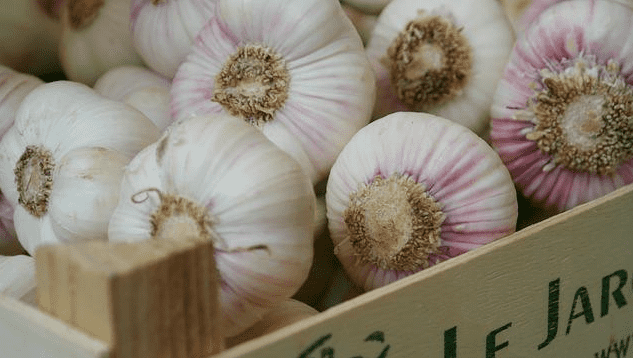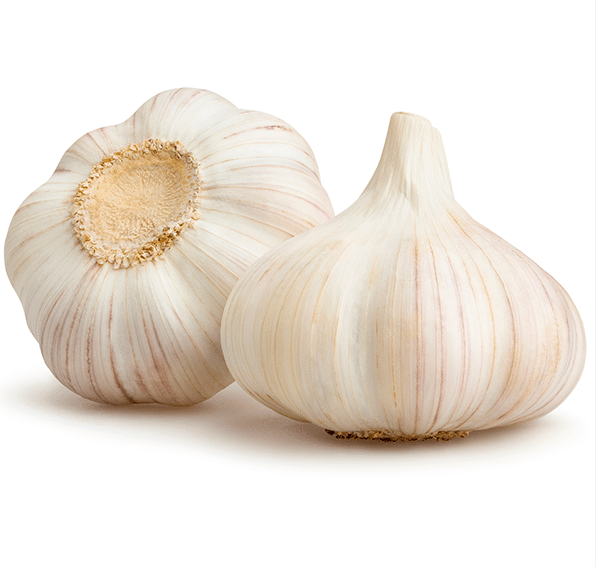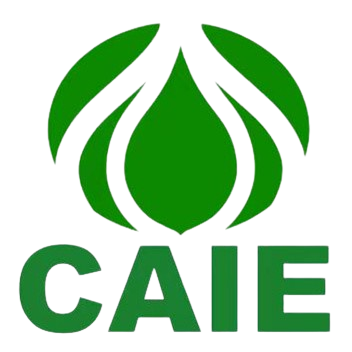Introduction
China dominates the global garlic market, accounting for a significant portion of the world’s garlic production and exports. This blog explores the current state of China’s garlic exports and anticipates future trends. Whether you’re an importer, a farmer, or simply a garlic enthusiast, this comprehensive analysis will provide valuable insights into the ever-evolving world of Chinese garlic exports. As we delve deeper, we will uncover the factors behind China’s dominance, the challenges faced, and the exciting innovations that promise to shape the future of this market.
The Current Market Situation
1. Global Dominance
China’s influence in the global garlic market is unmatched. Here are some key points highlighting China’s dominance:
- Production Powerhouse: China produces over 80% of the world’s garlic, making it the largest producer by a significant margin. This extensive production capacity is supported by millions of hectares of farmland dedicated to garlic cultivation, particularly in provinces like Shandong, Henan, and Hebei. The sheer volume of garlic produced annually in China dwarfs that of any other country, ensuring a steady supply to meet both domestic and international demand.
- Export Leader: China is the leading exporter of garlic, supplying garlic to over 150 countries worldwide. This extensive export network has been built over decades, with Chinese garlic being a staple in various cuisines around the globe. The reliability and consistency of Chinese garlic exports have made them a preferred choice for many importers.
- Economic Impact: Garlic exports contribute significantly to China’s agricultural economy, supporting millions of farmers and workers. The garlic industry provides livelihood opportunities in rural areas and plays a crucial role in poverty alleviation. The economic benefits extend beyond farmers to include those involved in processing, packaging, and logistics.
2. Export Destinations
China exports garlic to various regions, with significant markets including:
- Asia: Neighboring countries such as South Korea, Japan, and Southeast Asian nations are major importers. These countries appreciate the quality and affordability of Chinese garlic and incorporate it into their traditional dishes. The proximity of these markets also reduces transportation costs, making Chinese garlic even more competitive.
- Europe: European countries, including Spain, Italy, and France, import large quantities of Chinese garlic. Despite having their own garlic production, European countries often turn to Chinese imports to meet demand during off-seasons or to supplement local supply. The consistent quality and competitive pricing of Chinese garlic make it an attractive option for European markets.
- North America: The United States and Canada are also key markets for Chinese garlic. In these countries, garlic is a popular ingredient in both home cooking and the food industry. Chinese garlic meets the stringent quality and safety standards required by North American consumers, ensuring its widespread acceptance.
3. Export Volumes and Prices
The volume and price of Chinese garlic exports can fluctuate based on several factors:
- Supply and Demand: Global demand and domestic production levels significantly impact export volumes and prices. In years of high global demand or reduced production in other garlic-producing countries, Chinese exports can see a substantial increase. Conversely, oversupply can lead to price drops.
- Seasonal Variations: Garlic production and exports are subject to seasonal changes, influencing market dynamics. Harvest seasons, weather conditions, and storage capacities all play a role in determining the availability and pricing of garlic at different times of the year.
- Trade Policies: Changes in international trade policies and tariffs can affect export volumes and pricing. Trade agreements between China and importing countries can either facilitate or hinder garlic exports. Additionally, geopolitical tensions and trade wars can create uncertainties in the market.
| Year | Export Volume (Metric Tons) | Average Price per Ton (USD) |
|---|---|---|
| 2019 | 1.7 million | $1,100 |
| 2020 | 1.8 million | $1,200 |
| 2021 | 1.9 million | $1,250 |
| 2022 | 2.0 million | $1,300 |
The table above illustrates the steady growth in export volumes and the corresponding increase in prices over recent years. This upward trend reflects the growing global demand for Chinese garlic and the ability of Chinese producers to meet this demand efficiently.
Factors Driving China’s Garlic Exports
1. Favorable Climate and Geography
China’s diverse climate and fertile soil provide ideal conditions for garlic cultivation. Major garlic-producing regions, such as Shandong, Henan, and Jiangsu, benefit from favorable weather patterns and rich soil, enhancing garlic quality and yield. These regions have well-established agricultural practices and infrastructure that support large-scale garlic farming. The climatic conditions in these areas, characterized by cold winters and warm summers, are perfect for garlic, ensuring optimal growth and flavor development.
2. Advanced Agricultural Practices
China’s garlic production benefits from advanced agricultural practices, including:
- Modern Cultivation Techniques: Use of high-yield garlic varieties and efficient farming methods. Chinese farmers employ techniques such as crop rotation, organic fertilization, and intercropping to maximize yield and maintain soil health. The adoption of high-yield varieties has significantly increased production efficiency.
- Integrated Pest Management: Implementation of sustainable pest control measures to protect crops. Chinese farmers use a combination of biological controls, natural predators, and minimal chemical interventions to manage pests, ensuring the production of safe and high-quality garlic.
- Post-Harvest Technology: Advanced storage and processing facilities to maintain garlic quality and extend shelf life. Modern cold storage facilities and packaging technologies help in preserving the freshness and quality of garlic during transportation, reducing spoilage and losses.
3. Government Support
The Chinese government plays a crucial role in supporting garlic exports through:
- Subsidies and Incentives: Financial support for garlic farmers and exporters to enhance production and competitiveness. Government subsidies help reduce the cost of inputs like seeds, fertilizers, and machinery, making garlic farming more profitable.
- Trade Agreements: Negotiation of favorable trade agreements to expand market access for Chinese garlic. Bilateral and multilateral trade agreements open new markets and reduce trade barriers, facilitating smoother export processes.
- Research and Development: Investment in agricultural research to develop improved garlic varieties and cultivation techniques. Government-funded research institutions focus on breeding disease-resistant and high-yield garlic varieties, as well as developing sustainable farming practices.
Challenges in the Garlic Export Market
Despite its dominance, China’s garlic export market faces several challenges:

1. Trade Restrictions
International trade restrictions and tariffs can impact China’s garlic exports. Ongoing trade negotiations and changes in trade policies can create uncertainty for exporters. For instance, tariffs imposed by major importing countries can increase the cost of Chinese garlic, making it less competitive. Additionally, political tensions and trade disputes can lead to sudden changes in trade regulations, affecting the stability of export markets.
2. Quality Control
Maintaining consistent quality standards is crucial for sustaining export markets. Issues such as pesticide residues and inconsistent product quality can affect China’s reputation and market access. Importing countries often have strict quality standards and regulatory requirements that must be met. Any lapses in quality control can lead to rejections, recalls, and loss of consumer trust. Ensuring rigorous quality control measures from cultivation to packaging is essential for maintaining market credibility.
3. Competition
China faces competition from other garlic-producing countries, such as India, Spain, and the United States. Competing with these countries requires continuous innovation and quality improvement. Each of these countries has its own unique advantages, such as geographic proximity to certain markets or specific garlic varieties that are preferred by consumers. To stay ahead, Chinese producers need to focus on improving product quality, diversifying their product offerings, and adopting sustainable practices.
Future Trends in China’s Garlic Exports
1. Technological Advancements
The future of China’s garlic exports will be shaped by technological innovations:
- Precision Agriculture: Use of technology for precise planting, irrigation, and harvesting to optimize yields and quality. Technologies such as GPS-guided tractors, drones for field monitoring, and automated irrigation systems can significantly improve efficiency and reduce costs.
- Genetic Research: Development of new garlic varieties with enhanced flavor, disease resistance, and longer shelf life. Genetic research can lead to the creation of garlic strains that are more resilient to environmental stresses and pests, while also offering superior taste and nutritional benefits.
- Automation: Implementation of automated systems for efficient garlic processing and packaging. Automation can streamline various stages of garlic production, from planting and harvesting to sorting and packaging, reducing labor costs and improving consistency.
2. Sustainability Initiatives
Sustainability is becoming increasingly important in agriculture, including garlic production:
- Organic Farming: Growth in organic garlic farming to meet rising consumer demand for health and environmentally friendly products. Organic farming practices, such as using natural fertilizers and avoiding synthetic pesticides, can enhance soil health and biodiversity.
- Water Conservation: Adoption of water-saving technologies and practices to address water scarcity issues. Efficient irrigation systems, rainwater harvesting, and soil moisture monitoring can help optimize water use and reduce waste.
- Soil Health: Focus on maintaining soil health through sustainable farming practices and reduced chemical use. Practices such as crop rotation, cover cropping, and minimal tillage can improve soil structure, fertility, and microbial activity, leading to healthier and more productive garlic crops.
3. Market Expansion
China’s garlic export market is poised for expansion in several areas:
- New Markets: Exploration of emerging markets in Africa and South America, where garlic consumption is on the rise. These regions offer untapped potential for Chinese garlic exports, with growing populations and increasing culinary interest in garlic.
- Product Diversification: Development of new garlic-based products, such as garlic powders, oils, and supplements. Diversifying product lines can help cater to different consumer preferences and create additional revenue streams.
- E-commerce: Rise in online sales platforms, making it easier for global consumers to access Chinese garlic. The growth of e-commerce and online marketplaces has opened new avenues for direct-to-consumer sales, allowing Chinese garlic producers to reach a broader audience and build brand recognition.
4. Health and Wellness Trends
As consumers worldwide become more health-conscious, the demand for garlic, known for its health benefits, is expected to grow:
- Nutritional Awareness: Increased awareness of garlic’s nutritional benefits, including its role in heart health and immune support. Garlic is rich in antioxidants, vitamins, and minerals, making it a valuable addition to a healthy diet. Public education campaigns and scientific research highlighting these benefits can drive demand.
- Functional Foods: Incorporation of garlic into functional foods and supplements aimed at improving overall health and wellness. Garlic extracts and supplements are popular for their potential to boost immunity, reduce inflammation, and support cardiovascular health.
- Dietary Trends: Popularity of diets emphasizing natural and whole foods, such as the Mediterranean diet, which includes garlic as a staple ingredient. As more people adopt these dietary patterns, the demand for fresh and processed garlic products is likely to increase.
Strategies for Success in the Export Market
Businesses looking to succeed in the garlic export market should consider the following strategies:
1. Quality Control
Maintaining high quality standards is essential for building consumer trust and loyalty:
- Consistent Quality: Ensure consistent flavor, color, and freshness across all products. Implementing rigorous quality control protocols throughout the supply chain, from farming to packaging, can help maintain product consistency and meet consumer expectations.
- Transparent Practices: Be transparent about farming practices, origin, and processing methods. Providing detailed information about the production process, including certifications and quality assurances, can enhance consumer confidence and differentiate your products from competitors.
2. Marketing and Branding
Effective marketing and branding can help differentiate your product in a competitive market:
- Storytelling: Share the story behind your garlic, including its origins, health benefits, and culinary uses. Engaging narratives about the history, culture, and traditions associated with garlic farming can resonate with consumers and create a strong brand identity.
- Visual Appeal: Use high-quality images and packaging that highlight the premium quality of your garlic. Attractive packaging and professional branding can make your products stand out on store shelves and online platforms, attracting more customers.
- Educational Content: Provide recipes, cooking tips, and health information to engage and inform consumers. Offering valuable content that educates consumers about the nutritional benefits and versatile uses of garlic can enhance brand loyalty and encourage repeat purchases.
3. Distribution Channels
Expanding distribution channels can increase market reach and accessibility:
- Online Sales: Leverage e-commerce platforms to reach a wider audience. Establishing an online presence through your own website or partnering with popular online marketplaces can help you tap into the growing trend of online grocery shopping.
- Retail Partnerships: Partner with grocery stores, farmers’ markets, and specialty food shops to increase visibility. Building relationships with retailers and wholesalers can ensure your products are available in physical stores, enhancing brand visibility and consumer accessibility.
- Direct-to-Consumer: Consider direct-to-consumer sales models, such as subscription boxes or farm shares. These models allow you to build a loyal customer base and offer personalized experiences, such as delivering fresh garlic directly to consumers’ doorsteps.

More information about Chinese garlic is available at:
- Chinese Garlic Wholesalers: Your Best Choice Now
- China Garlic Exports: Astonishing Growth and Future Trends
- China Garlic Production: Astonishing 75% Share of the World’s Garlic Market
- Chinese Garlic Varieties: Discover 7 best and Flavorful Types
- China Garlic Excellence: 7 Essential Storage Strategies
Conclusion
China’s garlic export market is a dynamic and growing sector with significant potential. By understanding current market conditions and anticipating future trends, businesses can position themselves for success in this competitive industry. Whether you’re a producer, exporter, or consumer, embracing the opportunities presented by China’s garlic exports can lead to a prosperous future. The continuous evolution of agricultural practices, technological advancements, and consumer preferences ensures that the garlic export market will remain vibrant and full of opportunities.
